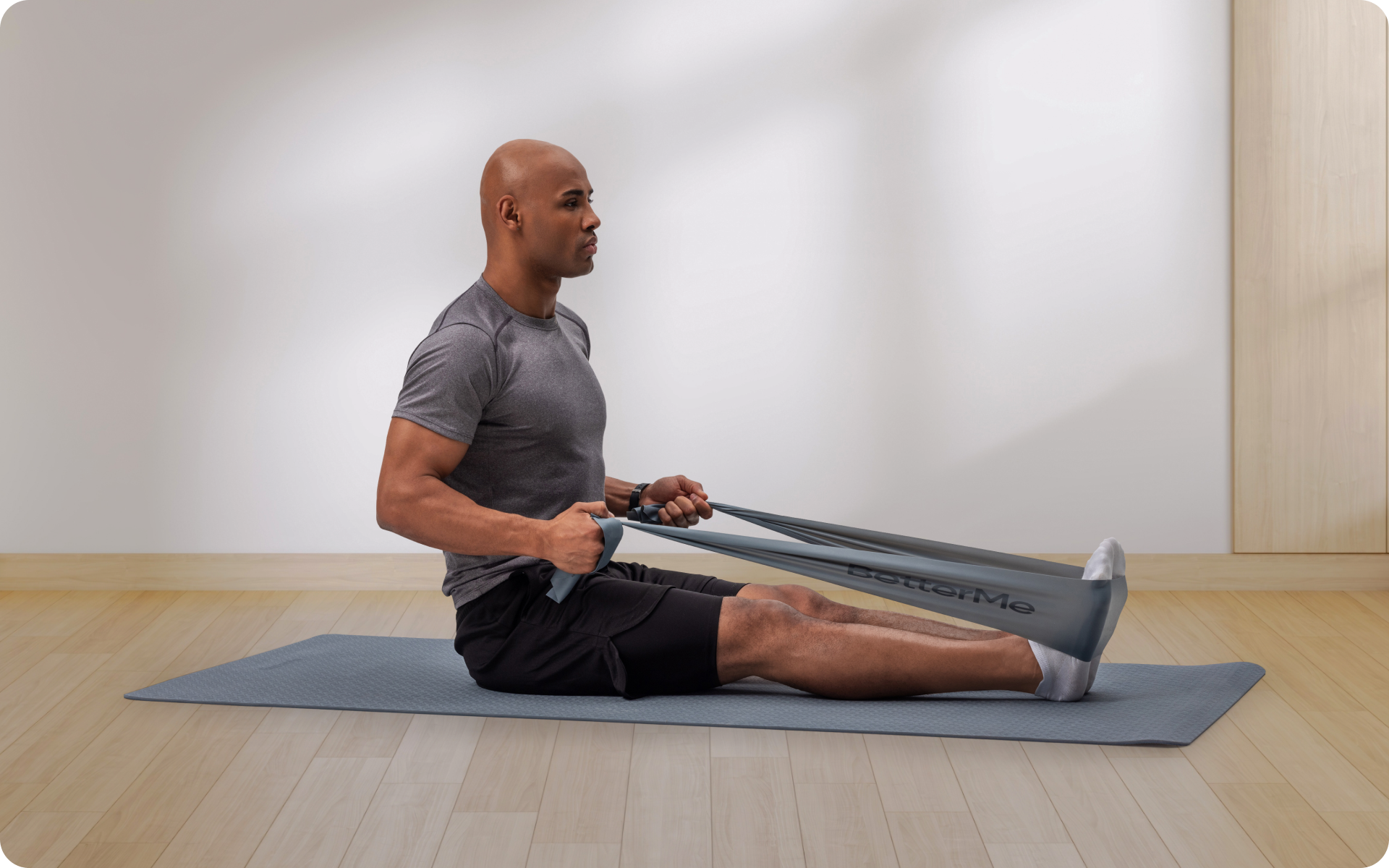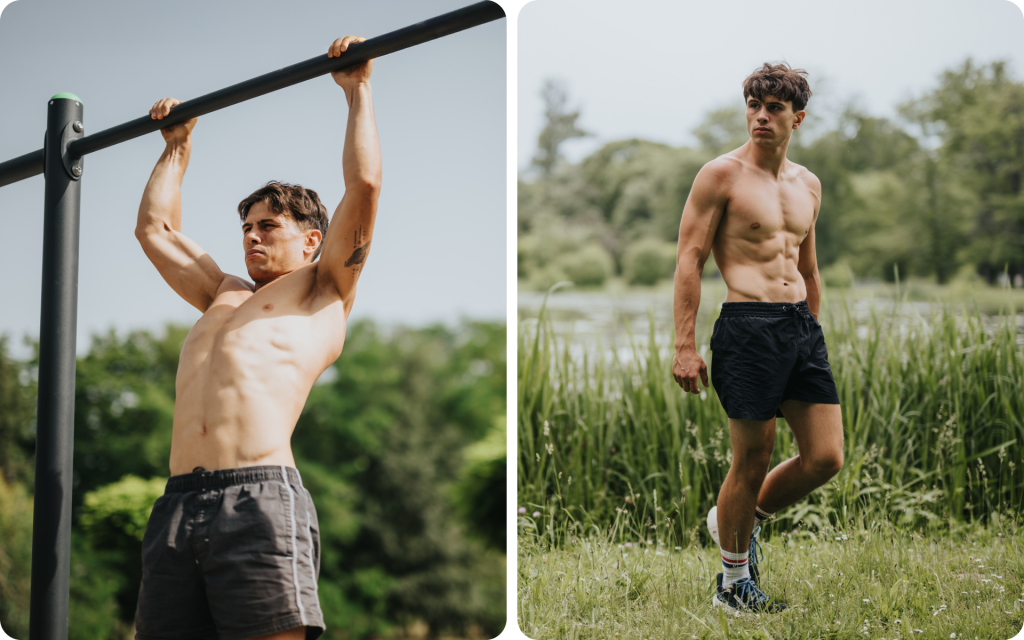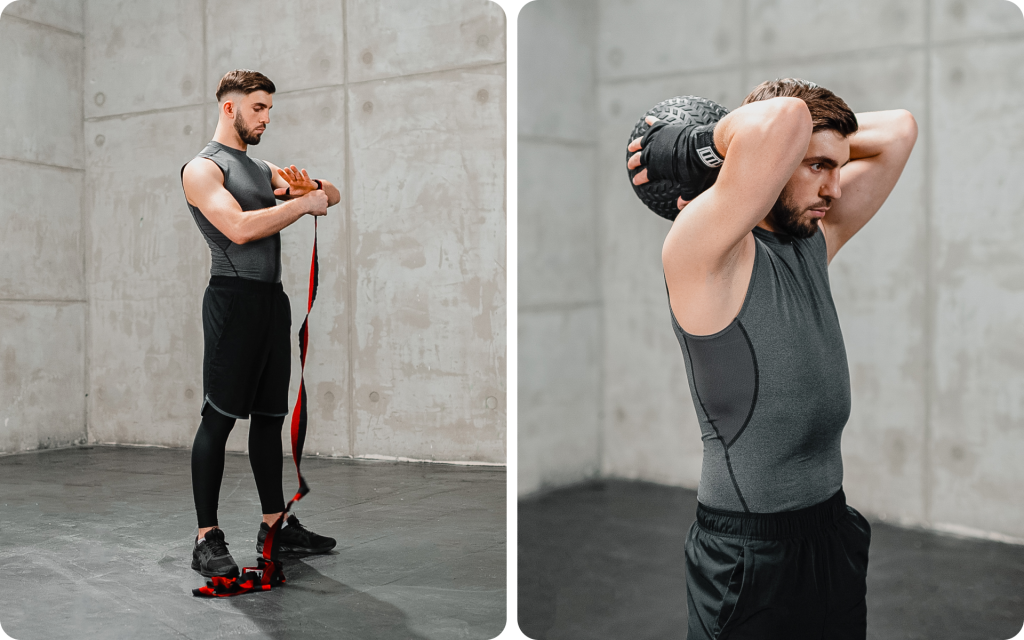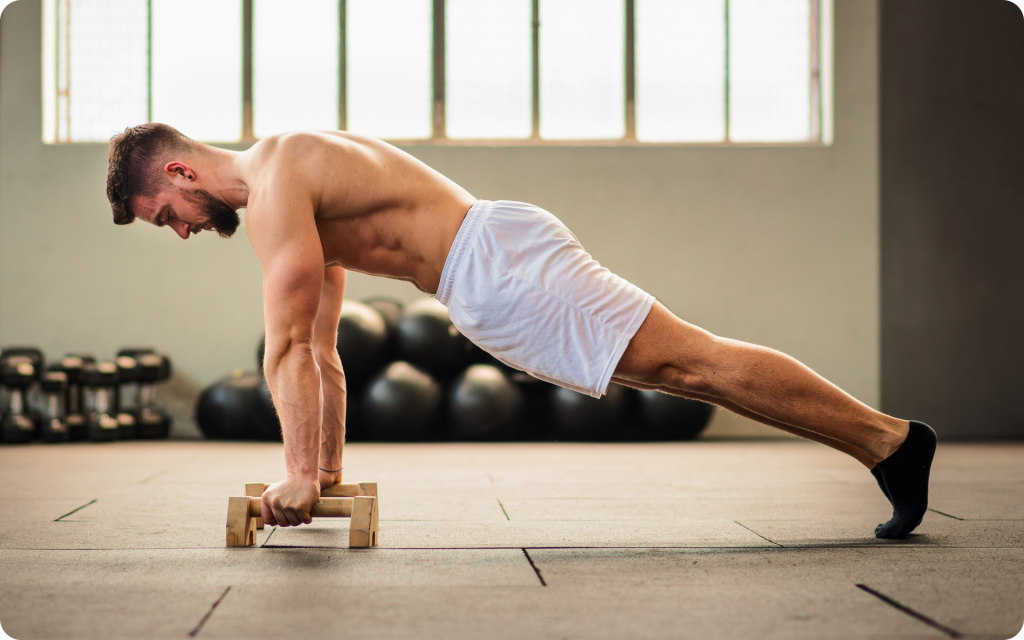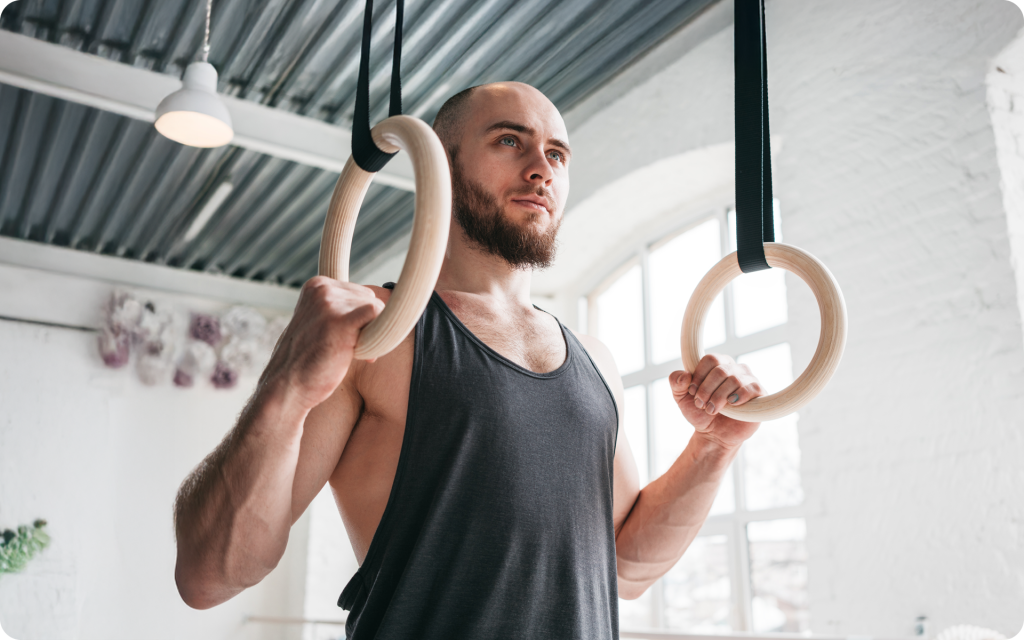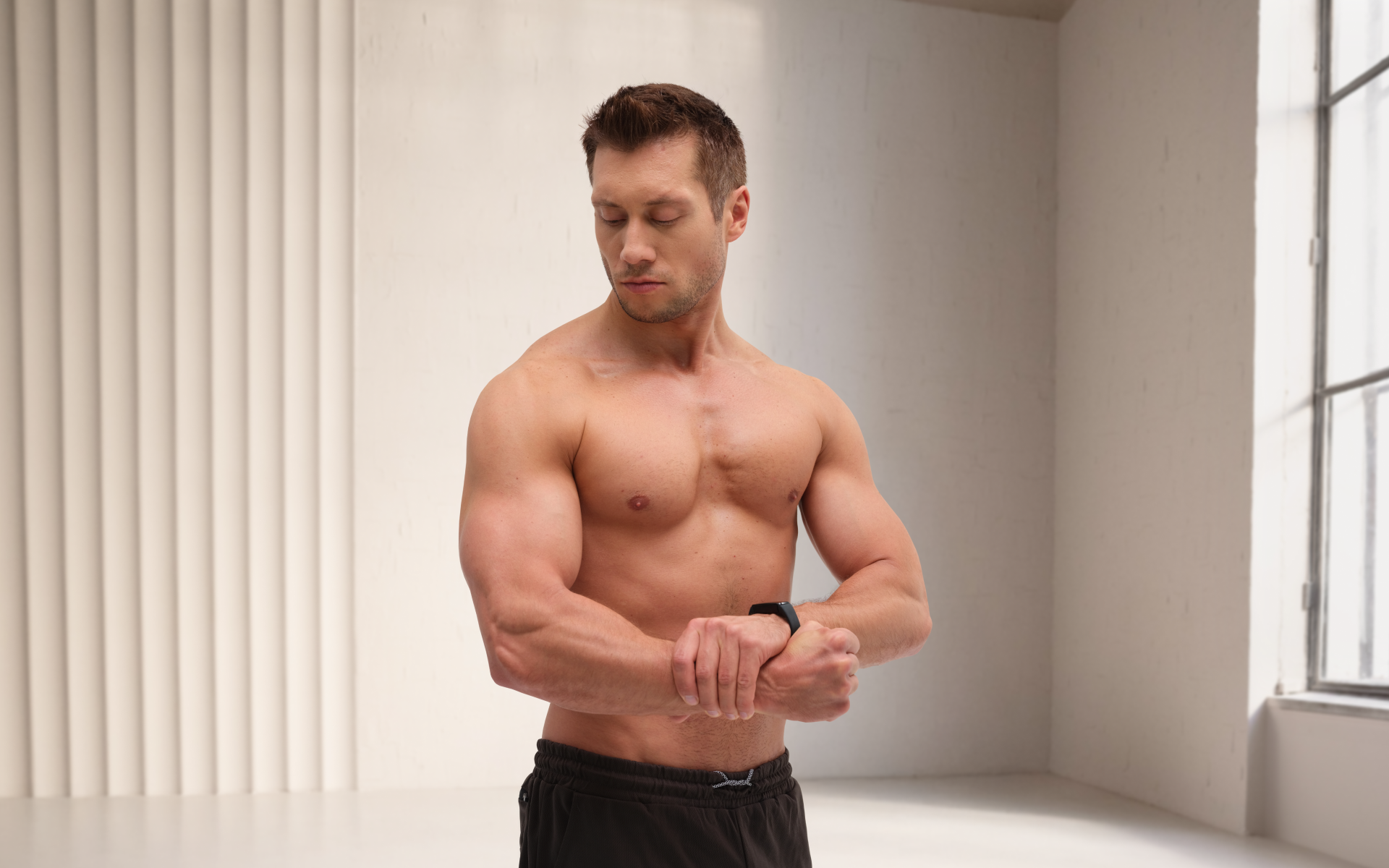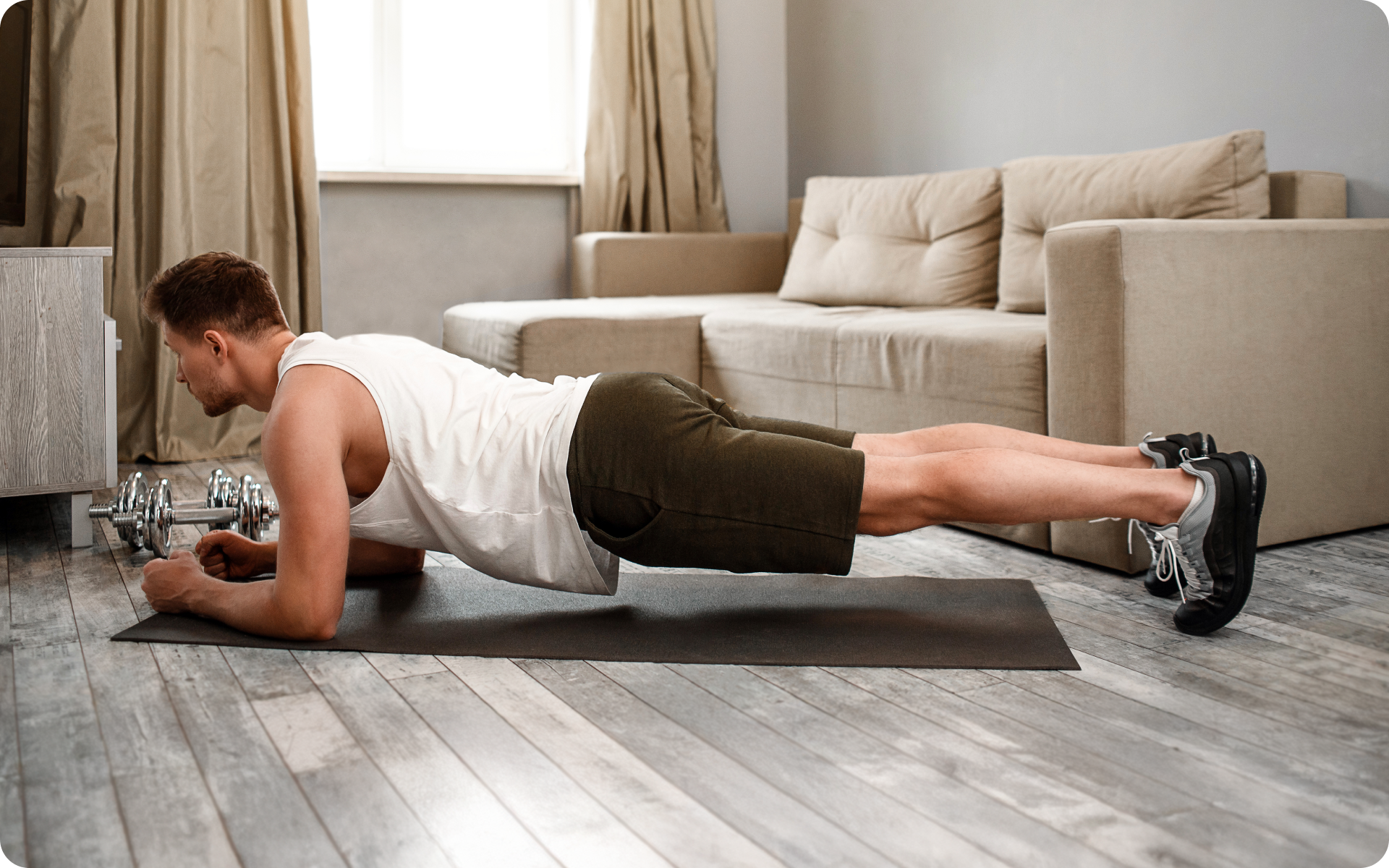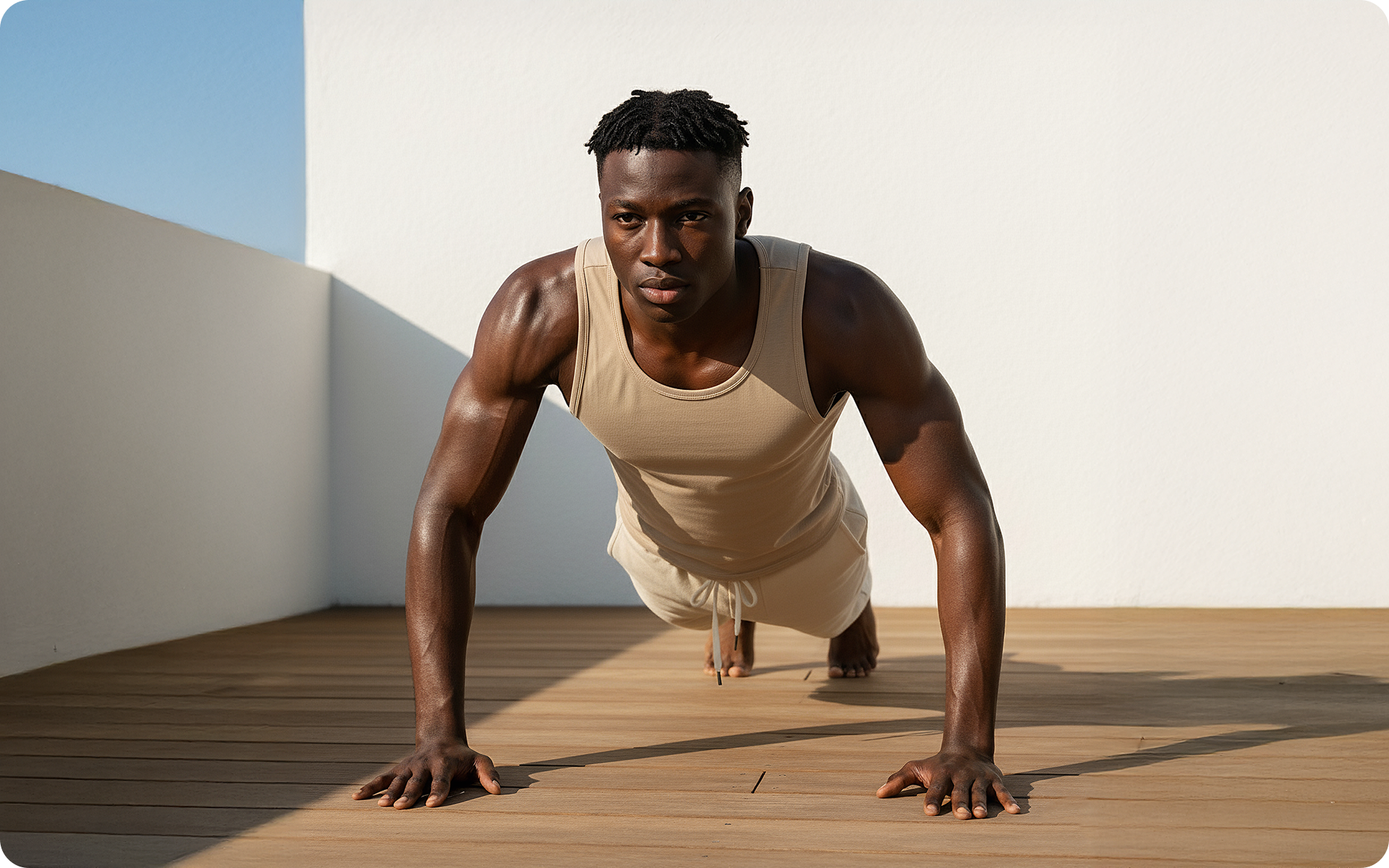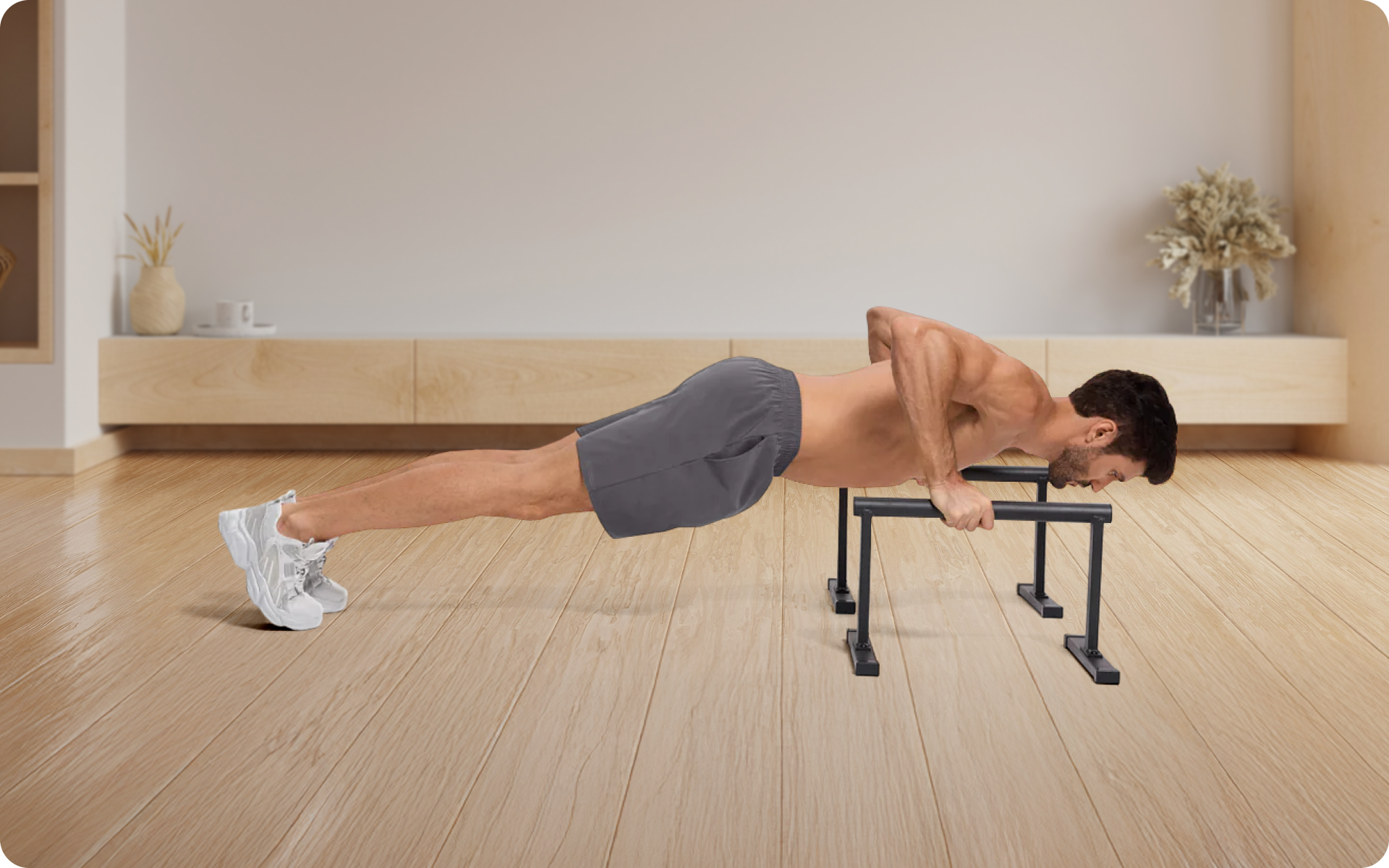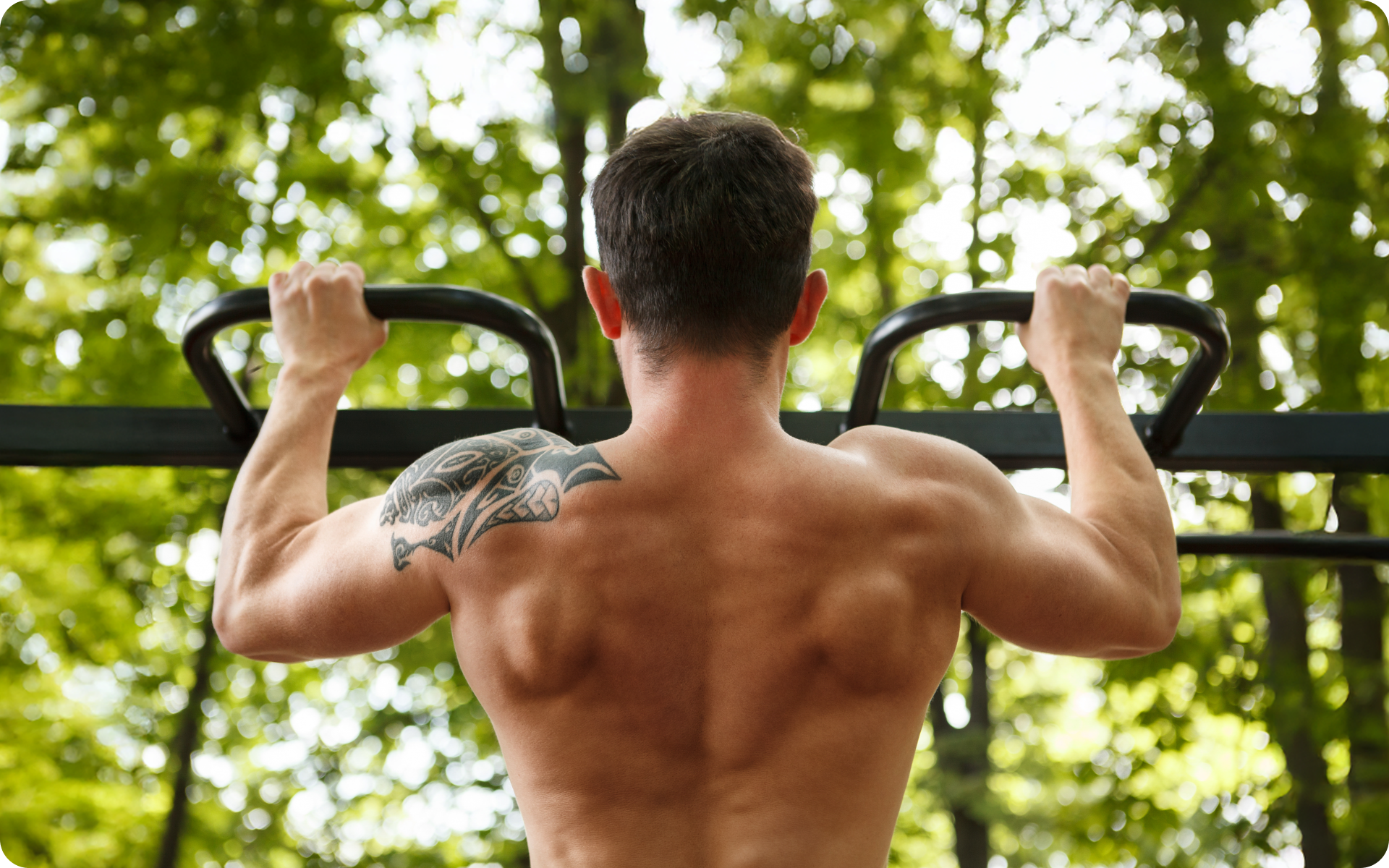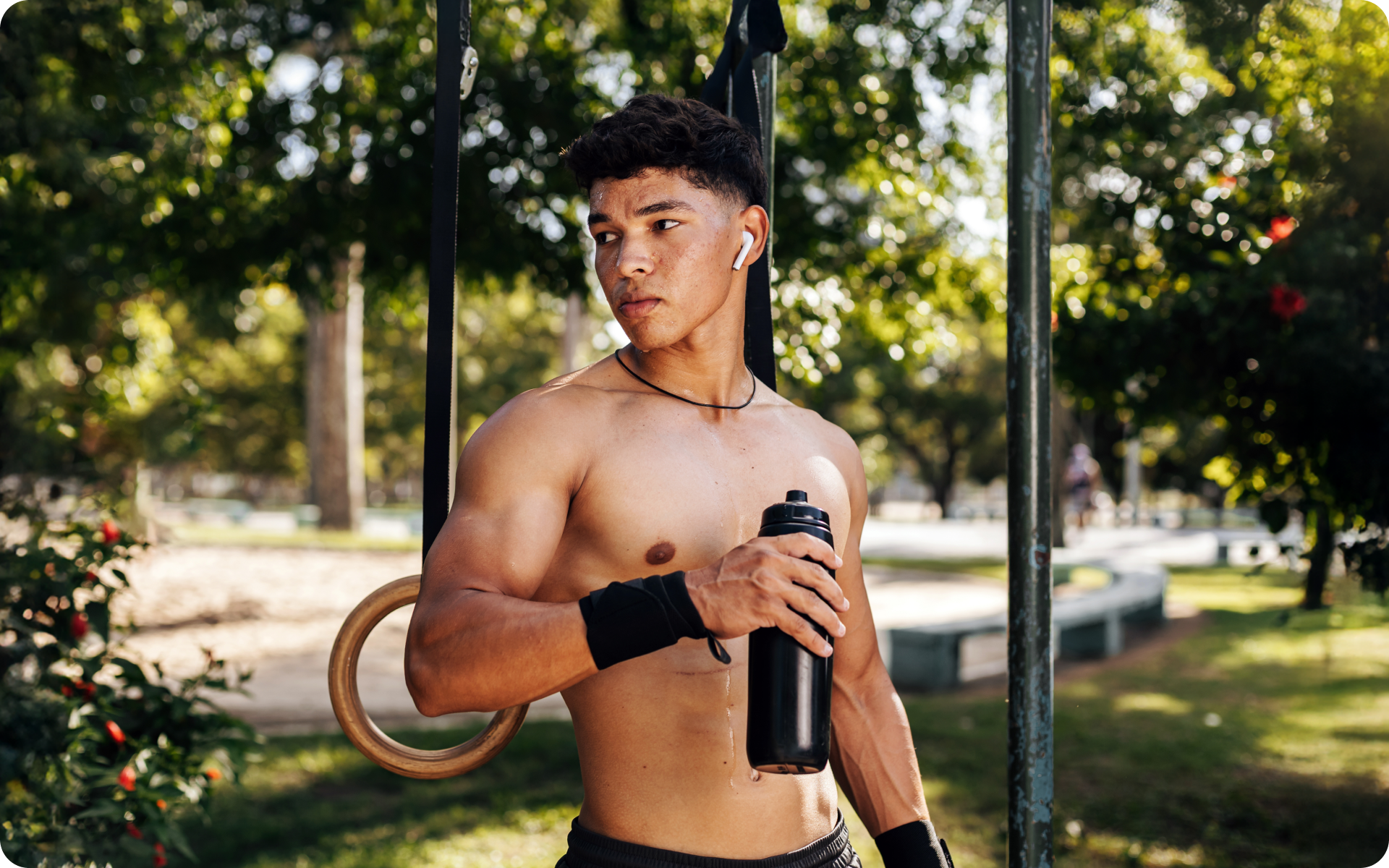The back is an important region of the body as it plays a crucial role in maintaining proper posture, balance, and stability. A strong and powerful back helps with daily activities and also improves athletic performance.
One effective way to strengthen your back muscles is through calisthenics workouts. Calisthenics refers to exercises that use body weight to build strength, flexibility, and endurance (1).
These exercises require minimal equipment and can be done anywhere, which makes them an ideal choice for those looking for convenient ways to work out.
Let’s discuss 8 calisthenics exercises for the back that can help you achieve a strong and powerful back.
What Is the Best Calisthenics Workout for Your Back?
The best calisthenics workout for your back is one that targets all the major muscle groups of the back, including the lats, traps, rhomboids, and erector spinae.
More importantly, it’s customized to your fitness level and goals. This means how many reps and sets you should do, and the difficulty level of the exercises should be based on your current fitness level and your desired results.
For beginners, it’s recommended to start with 2-3 sessions per week and gradually increase the frequency as you progress. It’s always best to tune in to your body when deciding how often to do these exercises.
Although calisthenics is primarily body weight exercises, a back workout can include some equipment such as pull-up bars, resistance bands, rings, or suspension trainers for added difficulty and intensity.
However, these are optional and can be substituted with other exercises if you don’t have access to them.
Cobra Pose
The cobra pose is an excellent starting point for any back-focused calisthenics workout. This exercise primarily targets the lower-back muscles and promotes flexibility in the spine. No equipment is necessary, which makes it ideal for back calisthenics with no equipment.
Steps:
- Start by lying face down on your mat with your legs extended and feet together.
- Place your hands under your shoulders with your elbows close to your body.
- Inhale as you slowly lift your chest off the floor, keeping your lower ribs on the ground.
- Hold the position for a few breaths, then exhale as you return to the starting position.
Superman
For those who are emphasizing lower-back calisthenics, the Superman exercise is a staple. This movement engages the lower back, glutes, and shoulders, providing a comprehensive core and back strengthening exercise without the need for equipment.
Steps:
- Lie face down with your arms extended in front of you and your legs straight.
- Lift your arms, chest, and legs off the ground simultaneously.
- Hold the position for a few seconds while keeping your head neutral.
- Slowly lower back down to the starting position.
Resistance Band Deadlifts
Resistance band deadlifts are an effective entry in the category of calisthenics back workout with bar alternatives. Utilizing a resistance band, this exercise engages the erector spinae, in addition to the glutes and hamstrings.
Steps:
- Stand on the center of the band with your feet hip-width apart, holding each end in your hands.
- With your chest up and shoulders back, hinge at the hips to lower your upper body slightly forward.
- Stand up straight while pulling against the band’s resistance, squeezing your glutes at the top.
- Return to the starting position with controlled movements.
Reasons why BetterMe is a safe bet: a wide range of calorie-blasting workouts, finger-licking recipes, 24/7 support, challenges that’ll keep you on your best game, and that just scratches the surface! Start using our app and watch the magic happen.
Resistance Band Pulldowns
This exercise is ideal for calisthenics for back and biceps and simulates the pull-up motion and helps strengthen the lats and rhomboids. A sturdy object is required to anchor the band overhead.
Steps:
- Secure a resistance band to a high anchor point.
- Kneel or stand, grasping the band with both hands, arms extended overhead.
- Pull the band down toward your chest, engaging your upper-back muscles.
- Slowly return to the starting position, maintaining tension in the band.
Wide Grip Australian Pull-Ups
A great introduction to the calisthenics back workout with bar category, wide grip Australian pull-ups target the lats, rhomboids, and biceps. This exercise requires a low bar or suspension trainer.
Steps:
- Position yourself under the bar with an overhand grip, hands wider than shoulder-width apart.
- Keep your body straight, heels touching the floor.
- Pull your chest toward the bar by squeezing your shoulder blades together.
- Lower back to start with control, maintaining an engaged core.
Close Grip Chin-Ups
For those who are progressing in their calisthenics for back and biceps journey, close grip chin-ups offer a challenging yet rewarding exercise. You’ll need a pull-up bar for this movement.
Steps:
- Grasp the bar with an underhand grip, hands shoulder-width apart.
- Hang with arms fully extended and shoulders relaxed.
- Pull your chin above the bar by flexing your elbows and engaging your biceps.
- Lower yourself back down to a fully extended arm position.
Wide Grip Pull-Ups
Wide grip pull-ups are a classic calisthenics shoulder workout that engages the lats, traps, and shoulders. Perfect for advanced workouts, this exercise requires a sturdy pull-up bar.
Steps:
- Grip the bar with hands wider than shoulder-width apart, using an overhand grip.
- Hang with arms fully extended and body steady.
- Pull your chest toward the bar while engaging your upper-back muscles.
- Carefully lower back to a full arm extension position.
Ring Pull-Ups
Incorporating ring pull-ups in your routine enhances upper-back calisthenics by providing an unstable grip, which engages more muscles. Gymnastic rings are necessary for this exercise.
Steps:
- Adjust the rings to a suitable height and take an overhand grip.
- Hang with your arms straight and your body in a hollow position.
- Pull up until your chin is over the rings, engaging the lats and biceps.
- Lower yourself back to full extension with control.
Read more: 1-Hour Upper Body Workout: How To Create The Perfect Plan For Your Goals
Can You Build Your Back with Calisthenics?
Yes, you can definitely build a strong and powerful back with calisthenics. In fact, many athletes and fitness enthusiasts swear by calisthenics for developing their back muscles.
Calisthenics exercises are highly effective at targeting the back muscles as they:
Build Functional Strength
Functional strength refers to the ability to perform everyday activities with efficiency and ease. It’s not just about having large muscles, it’s also about having muscles that work harmoniously together to produce force, movement, and power in natural ways.
Calisthenics excels in building functional strength as it relies on compound movements that engage multiple muscle groups simultaneously (2). Exercises such as pull-ups, push-ups, and rows mimic real-world actions, training your muscles to work in synergy.
This type of training improves your body’s overall support structure, enabling you to perform daily tasks more effectively and reduce the risk of injury.
Calisthenics promotes better neuromuscular coordination by using body weight, helping refine the way your nervous system controls muscular movements.
Explore bodyweight shoulder workouts that enhance strength and mobility, transforming your routine with effective and equipment-free exercises.
Improve Muscle Endurance
Calisthenics significantly enhances muscle endurance (2), which is essential for performing extended physical activities without experiencing early fatigue.
By repeatedly engaging in body weight exercises such as pull-ups and inverted rows, you can increase the stamina of your back muscles.
This sustained activity supports longer workouts and contributes to better performance in sports and daily activities that require prolonged physical exertion.
Develop Core Stability
A strong back is often complemented by a stable core, which calisthenics naturally cultivates. Many calisthenics exercises activate core muscles as stabilizers to maintain balance and proper form, particularly when performing complex movements.
For example, exercises such as the plank and hanging leg raises work the back muscles and demand considerable core engagement. This integrated approach fortifies the spine and enhances overall body resilience (3).
Boosts Mental Toughness
The practice of calisthenics can also build mental toughness, which is an integral part of any fitness journey. The progressive nature of calisthenics demands persistent effort and determination to overcome challenges and achieve greater levels of difficulty (4).
As you master new exercises and increase repetitions, you develop a sense of accomplishment and mental resilience. This mental fortitude enhances your workout performance and positively impacts your everyday life by building confidence and perseverance.
How to Get a V-Shaped Back with Calisthenics
The V-shape is primarily achieved by developing the latissimus dorsi muscles (lats), which create width in the upper back. In addition, broadening the shoulders through the deltoid muscles, toning the waist by strengthening the core muscles, and maintaining a healthy body fat percentage contribute to the V-shaped appearance. This combination of wide lats, strong shoulders, and a narrow waist creates the classic V-shaped physique.
BetterMe: Health Coaching app helps you achieve your body goals with ease and efficiency by helping to choose proper meal plans and effective workouts. Start using our app and you will see good results in a short time.
How Do You Build Lats with Calisthenics?
To build lats (latissimus dorsi muscles) using calisthenics, you need to target them with the right exercises and techniques. The following are some effective ways to build your lats with calisthenics:
- Incorporate Pull-Ups and Chin-Ups
Pull-ups and chin-ups are two of the most effective exercises for building lats with calisthenics. These compound movements engage multiple muscle groups, including the lats, which makes them an excellent choice for targeted back training.
When performing pull-ups, use an overhand grip that’s wider than shoulder-width apart and pull yourself up until your chin reaches above the bar. For chin-ups, use an underhand grip with your hands shoulder-width apart and pull yourself up until your chin is above the bar.
- Try Inverted Rows
Inverted rows are another great calisthenics exercise for building lats. This variation of a row targets the upper-back muscles, including the lats, while also engaging stabilizing muscles such as the core and glutes.
To perform an inverted row, lie flat on your back under a sturdy horizontal bar or table. Keep your body straight and use your arms to pull yourself up until your chest reaches the bar/table. Slowly lower yourself back down with control.
- Progressively Increase Intensity
To continue building your lats with calisthenics, it’s important to continuously challenge yourself and increase your workout intensity (4). This can be achieved by adding reps, increasing resistance, or incorporating more challenging exercises into your routine.
Can Calisthenics Fix Bad Posture?
Although no posture is inherently good or bad, and research has shown that postural variability is the most important factor in the reduction and prevention of posture-related pain and dysfunction, calisthenics can certainly help improve postural control and decrease the likelihood of prolonged forward-shoulder (slouched) posture by (5):
- Strengthening the muscles responsible for postural alignment, such as the back, core, and glutes
- Stretching tight muscles that contribute to posture-related pain and dysfunction, such as the chest and hip flexors
- Engaging in full-body movements that promote proper alignment and balance
- Developing body awareness and mindfulness, which can help correct posture habits
By consistently practicing calisthenics exercises that target these areas, you can gradually improve your postural stability and awareness and prevent future postural issues.
However, it’s essential to also address any underlying causes of posture-related pain, such as sitting for prolonged periods or muscular imbalances, for long-term improvement.
Incorporating proper ergonomics into daily activities, regular variability of your posture throughout the day, and seeking professional guidance where necessary are crucial steps.
Read more: 7 Exercises For A V-Shape Back Workout With Dumbbells
Is Calisthenics Good for a Bad Back?
Calisthenics can be a beneficial form of exercise for individuals with back pain, as long as it’s approached with care and tailored to the individual’s specific condition.
Calisthenics exercises such as pull-ups and rows engage the back muscles, helping build strength and support the spine. Strengthening these muscles can alleviate strain and reduce the risk of further injury (6).
A strong core is essential for back health as it supports the spine. Many calisthenics exercises naturally incorporate core engagement, providing a dual benefit for back stability and strength.
Precautions
- Consult a Healthcare Professional: Before you start a calisthenics routine, especially if you have an existing back condition, it’s essential to consult a healthcare provider. They can help determine the most appropriate exercises and modifications for your specific needs.
- Start Slowly: Start with basic exercises to assess your current capabilities and gradually increase intensity as your back strength improves. This approach helps prevent overexertion and potential injury.
- Focus on Form: Proper form is vital for avoiding putting unnecessary strain on the back. Consider working with a trainer to ensure you’re performing exercises correctly.
By taking these precautions and focusing on exercises that build strength and flexibility, individuals with back pain can harness the benefits of calisthenics to improve their overall back health.
Discover the best rear delt exercises to boost your shoulder workout and enhance muscle definition.
Can You Overtrain the Back with Calisthenics?
Overtraining can hinder progress and lead to discomfort or injury, particularly in the sensitive back area. Some tell-tale signs of overtraining include:
- Persistent Soreness: If muscle soreness lasts for several days without improvement, it may be an indicator that your back isn’t getting enough recovery time.
- Fatigue: Feeling constantly tired or experiencing a lack of energy during workouts can be a sign of overtraining.
- Decreased Performance: A noticeable drop in strength, endurance, or ability to perform exercises at your usual level can signal that your body needs a break.
How to Avoid Overtraining
- Incorporate Rest Days: Ensure you have adequate rest days in your workout schedule. This will allow your muscles to recover and grow, reducing the risk of overuse injuries (7).
- Vary Exercises: Mix different exercises to target various parts of the back and prevent repetitive strain on the same muscle groups (8).
- Listen to Your Body: Pay attention to how your body feels. If you experience pain or extreme fatigue, it may be time to ease up on the intensity or take a break.
- Balanced Routine: Balance your workouts with exercises that target other muscle groups to ensure overall muscle development and avoid placing too much strain on the back.
It’s possible to build muscle with calisthenics (2). This form of exercise uses body weight to perform resistance training, effectively targeting muscles and promoting growth through exercises such as push-ups, pull-ups, and dips. Try these calisthenics shoulder exercises to enhance your strength and flexibility. You can get ripped with calisthenics. By combining high-intensity body weight exercises with a balanced diet and proper rest, you can achieve a lean and muscular physique, as calisthenics enhances muscle definition and endurance (9). You can replace the gym with calisthenics. Calisthenics provides a comprehensive workout that can improve strength, flexibility, and endurance without the need for gym equipment. However, it may require creativity to progressively overload your muscles as you advance. You can train your back with body weight exercises. Movements such as pull-ups, rows, and back extensions effectively target back muscles, helping build strength and improve postural control without equipment.Frequently Asked Questions
Is it possible to build muscle with calisthenics?
Can you get ripped with calisthenics?
Can I replace the gym with calisthenics?
Can you train your back with body weight?
The Bottom Line
Calisthenics can be a valuable tool for improving back health, building muscle, and achieving fitness goals. However, it’s important to approach calisthenics with proper form, equipment modifications where necessary, and adequate rest to avoid overtraining or exacerbating existing injuries.
DISCLAIMER:
This article is intended for general informational purposes only and does not serve to address individual circumstances. It is not a substitute for professional advice or help and should not be relied on for making any kind of decision-making. Any action taken as a direct or indirect result of the information in this article is entirely at your own risk and is your sole responsibility.
BetterMe, its content staff, and its medical advisors accept no responsibility for inaccuracies, errors, misstatements, inconsistencies, or omissions and specifically disclaim any liability, loss or risk, personal, professional or otherwise, which may be incurred as a consequence, directly or indirectly, of the use and/or application of any content.
You should always seek the advice of your physician or other qualified health provider with any questions you may have regarding a medical condition or your specific situation. Never disregard professional medical advice or delay seeking it because of BetterMe content. If you suspect or think you may have a medical emergency, call your doctor.
SOURCES:
- Calisthenics (2024,britannica.com)
- The Effect of Breaking Up Sedentary Time with Calisthenics on Neuromuscular Function: A Preliminary Study (2022,nih,gov)
- Optimizing Performance by Improving Core Stability and Core Strength (2008, researchgate.net)
- Progression of volume load and muscular adaptation during resistance exercise (2014, nih.gov)
- The effects of a calisthenics training intervention on posture, strength and body composition (2017, iospress.com)
- The Benefits of Calisthenics for Reducing Lower Back Pain (2022, mpcalisthenics.com)
- The effect of rest days on injury rates (2011, nih.gov)
- Does Varying Resistance Exercises Promote Superior Muscle Hypertrophy and Strength Gains? A Systematic Review (2022, nih.gov)
- The Effect of Calisthenics Exercises on Body Composition in Soccer Players (2020, researchgate.net)
